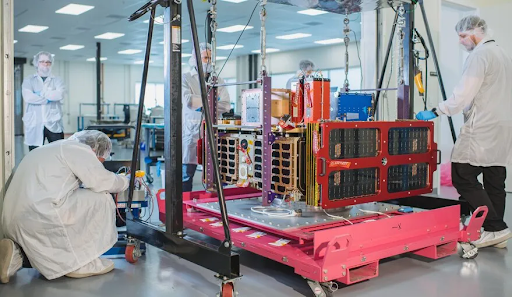Mars: A Plan for Colonization
SpaceX CEO Elon Musk announces a multi-planetary plan to put humans on Mars.
November 25, 2016
We have all heard of the planet Mars. Mars has attracted the attention of astronauts and scientists for as long as they’ve seen it in the sky. However far away this dream may seem, it may be closer than we think; in fact, we are a few decades away from beginning the process of colonizing Mars.
On Sept. 27, at the International Aeronautical Congress (IAC) in Guadalajara, Mexico, Elon Musk, the CEO of SpaceX, announced a plan to colonize Mars no more than a few decades from now. He has plans to create an Interplanetary Transport System (ITS), a privately-funded project to build a system to furthermore develop a safe travel into space and onto Mars. Keep in mind, this is the CEO who attempted to send Facebook’s $200 million satellite into space where it would orbit in effort to provide internet to those in parts of Africa, while using one of the Falcon 9 rockets, but in a disastrous turn of events, all ended blowing up back on Sept. 1, 2016, near Cape Canaveral in Florida.
Musk talks about how he wants to develop a plan that would be capable of sending 100 passengers to Mars, that would take as few as 80 days or as many as 150 days. According to The Verge, they state that the spaceship would be reusable and have the ability to refuel while orbiting. “That really is the fundamental breakthrough needed to revolutionize access to space,” Musk said in a statement on the SpaceX website. Ideally, you would need propellant to produce thrust for the trip back to Earth, essentially, a team would be able to build a propellant plant on Mars in order to send the ship back. If you think about it, that’s a lot shorter than the current time of roughly two and a half years from Earth to Mars and back. “This is not about everyone moving to Mars, this is about becoming multi-planetary,” Musk stated.
However, they have more to worry about, such as solar radiation that can cause serious cardiovascular disease and other severe health problems and the problem of traveling at supersonic speeds, which will surely test the heat-tolerant materials we have on Earth. He promises that it won’t be a one-way trip, recognizing how critical it is to ensure everyone can return. However, even though the idea and plan of traveling to Mars are out there, it will take a long amount of time in order to see this happening in the near future.








